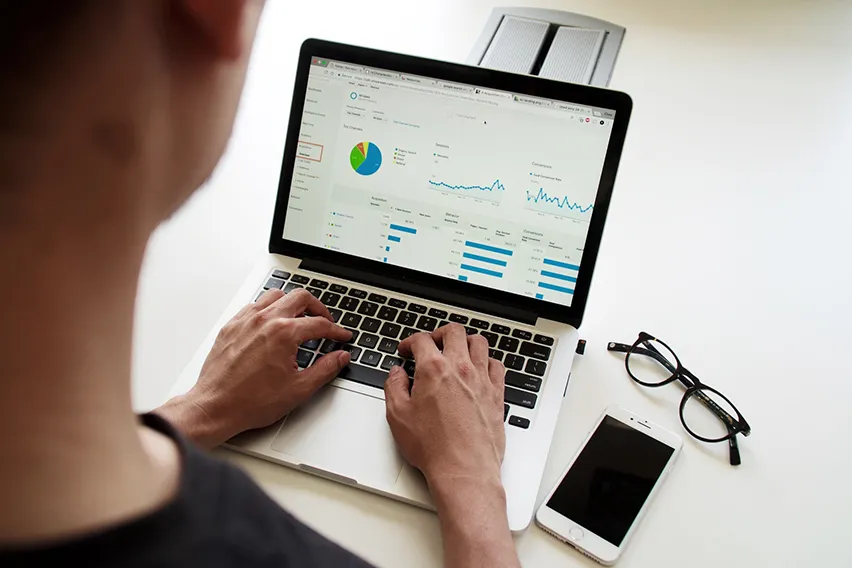12 Best Financial Reporting Software for 2025

Financial reporting software is a helpful tool any business can benefit from utilising, as it can ensure that small errors don’t become big issues for your company, it can identify financial trends by analysing monthly and yearly data, it can provide real-time analytics to help you make decisions, and it can improve your debt management. This type of financial reporting software keeps you in control, and most importantly, saves you time and money, so you can focus on managing your business.
Table of Contents
- FreshBooks
- QuickBooks
- Xero
- DataRails
- Sage
- Cube
- Oracle NetSuite
- Workday Adaptive Planning
- Vena Solutions
- Workiva
- Payhawk
- Kani
- Comparison of Financial Reporting Software Based on Business Size
- Type of Financial Reporting Software
We have assessed the 12 best financial reporting software options and their features, drawbacks, and pricing, allowing you to make the best decision for your company at a glance.
1. FreshBooks
Features
FreshBooks cloud-based financial reporting software is best for small business owners like you stay on track with meeting your financial goals, ensure you are charging enough for your services, and crunch the numbers in seconds. You can save time while staying organised and in control. The dashboard lets you see profits and loss, and other important business reports immediately after logging in, with easy-to-understand colour-coded spending breakdowns, payments collected reports, invoice details reports, and a summary of your most recent activity, amongst other important data.
FreshBooks is a robust bookkeeping and accounting solution for any small business, with accounting and invoicing software that can help you with tax management, budgeting, and planning, among other things, making it the best financial reporting software in 2025.

Pricing
You can try FreshBooks for free, and when you are ready to upgrade your service, the Lite tier is £15 per month, the Plus tier costs £25 per month, the Premium tier is £35 per month, or with the Select tier you can create a custom plan that works for your unique business needs.
2. QuickBooks
Features
With QuickBooks you can get your most recent financial statements, monitor and plan your cash flow, import data from other sources automatically, and track overdue invoices. This financial reporting software also allows you to customise your financial reports, so you can see the most pertinent information without becoming overwhelmed with unimportant stats. QuickBooks also allows you to schedule recurring reports that automatically send an email to you, or to your accountant.
Drawbacks
The interface can sometimes be difficult to navigate, some third-party software options don’t integrate properly, causing user frustration and interfering with the reporting process.
Pricing
You can try Quickbooks for free for 1 month, and then they offer 90% off for the first 6 months, after which it will cost £14 per month for the Simple Start plan, £24 per month for the Essentials plan, and £34 per month if you want the Plus plan. If you want to run more complex reports, you will have to purchase the advanced plan for £70 per month.
If you want to see a closer comparison between FreshBooks vs QuickBooks, FreshBooks has an easy-to-read chart available, comparing everything from customer service to pricing to report types available.
3. Xero
Features
With Xero, you can customise your financial reports and decide how you would like your data presented, you can generate up-to-date reports at any time, and it is easy to compare your actual spending and income with your proposed budget. Xero uses integrated AI to make organisation and report generation faster and easier, and mobile apps work well.
Drawbacks
Xero stipulates that all time entries have to be tied to projects so you cannot add additional work hours that are not part of a particular job. Some customers have found that navigation can be confusing at times, and support is only available via email, which can make it difficult when you need help with something right away.
Pricing
Xero costs £15 per month for the Starter tier, £30 per month for the Standard tier package, £42 per month for the Premium package, and £55 per month for the Ultimate tier. There are upgrading options and free trials for project tracking, advanced analytics, and other services as well.
To find out the differences between FreshBooks vs Xero, please see the chart on the FreshBooks website, which compares pricing, reporting options, ease of use, and more.
4. DataRails
Features
DataRails is an AI-powered platform that can automate repetitive processes, consolidate data from spreadsheets and reports, provide budgeting and forecasting, and more. It has a clean, user-friendly interface, and is easily integrated into your Excel workspace. It offers up-to-date insights, tracks trends, and keeps users up to date on their sales.
Drawbacks
It may not always be reliable when used with complex Excel formulas, refreshing the data can take a long time, and many users find the formulas in DataRails to be too complex to remember.
Pricing
Every DataRails program is customised to the business, based on your needs, the number of users, and any integrations you want to include. If you are interested in using DataRails, you will have to contact the company for an estimate.
5. Sage
Features
Sage is a useful bridge between Finance and Operations, giving insight into financial reports and analysis to help you with budgeting and planning for the future. You can integrate your Excel data into Sage, with real-time connections that update immediately, consolidating all of your reports and data into one attractive-looking, fast dashboard. This financial reporting software also creates balance sheets, income statements, sales reports, budget forecasts, project management reports, purchase orders, and more.
Drawbacks
Sage does not have a time tracking feature, its report customization options are limited, and some users have found that the interface feels dated, and unintuitive.
Pricing
To find out how much it will cost to integrate Sage into your workplace, you will have to use their contact form, fill in a few key details, and they will provide you with a quick demo and provide pricing and promos to you.
6. Cube
Features
Cube is a flexible, scalable, and powerful tool that uses familiar layouts to those of Google Sheets and Excel, allows for collaboration, and offers easy-to-read insights into your business finances. This program integrates a variety of data and reports, helping you unify your data and generate comprehensive reports. Templates are also available for quick reporting in seconds. It is very user-friendly and simple to implement.
Drawbacks
This is one of the more expensive options on our list. Some users also reported having difficulties building models within Excel, needing to update and fetch ranges manually after adjustments are made to models.
Pricing
Pricing for this software starts at £1025 monthly for the Essentials package, or you can opt for the more popular Premium, costing approximately £2009 per month. The Enterprise option allows you to custom-build your package so it best suits your company.
7. Oracle NetSuite
Features
Oracle offers accurate reporting that lets you access real-time information, helping you better understand your business. It does financial reporting, cloud finance and accounting solutions, financial planning, billing management, and more.
Drawbacks
For a “product tour” of NetSuite and to see pricing options, you have to fill out an email form, providing several details, making the product difficult to explore casually. Other drawbacks that have been reported by users include an intuitive layout that can be difficult to navigate for the average person, and taking a long time to set up. Customer service may also be unresponsive when you have issues with the product.
Pricing
You will have to fill in a form to see the pricing options or get a quote for Oracle Netsuite.
8. Workday Adaptive Planning
Features
This is a fast-moving adaptive planning financial reporting software platform that provides plenty of flexibility, quick modelling, machine learning, security, and easy data integration between multiple systems and reports. A unified data core lets teams from different departments collaborate, plan, and work across industries and time zones. The interface is intuitive, and the dashboard has an attractive visual element that makes figures easier to visualise.
Drawbacks
Some users have reported limited customisation options, and that the software slows down noticeably for companies with around 1,000 people. Some users also believe the formulas may be too difficult to use without the formula assistant.
Pricing
You will have to contact the sales team for a quote, as the information is not available on their website.
9. Vena Solutions
Features
Vena integrates seamlessly with Microsoft 365, and using industry-leading AI technology keeps you up to date and allows for insightful what-if analysis and strategic financial planning. You have the option to lock your Excel templates and generate custom reports, collaborate with teams across departments, and scale up your usage as your company grows.
Drawbacks
Some users have reported that this software can be difficult to learn, especially when trying to create reports from scratch. The Vena customer support team often takes a long time to return an email, interrupting workflow when there are issues to be resolved.
Pricing
Pricing is not readily available, and you will have to speak to a sales representative to go over your business needs to receive a demo and a price quote.
10. Workiva
Features
Workiva brings documents and data together to create integrated, accurate reports, helping teams work together. It is a cloud-based software, so you can access your work from any device. The dashboard is easy to set up and understand, financial reporting processes can be automated, and the software streamlines data collection, tracks updates, and accelerates workflow for a more productive workplace.
Drawbacks
Some of the formatting has been reported as not being very user-friendly.
Pricing
Like many of its contemporaries, Workiva offers a free demo, and pricing is determined after your business needs have been assessed by a salesperson.
11. Payhawk
Features
Payhawk is a cloud-based program that makes it simple for businesses to track their spending and corporate credit cards, and it consolidates all financial performance data into easy-to-understand reporting. It gives users a real-time overview of all company expenses, it allows for multiple currencies, and it integrates with accounting software with ease. Along with generating personalised, custom reports, you can track your company card, make every payment traceable, set spend limits, and create business budgets.
Drawbacks
The cost may be high for smaller businesses, and it sets the credit limit on the company cards to depend on the business’s financial wellness, which could potentially limit users. The budgeting tools may also have a pretty extreme learning curve.
Pricing
You must schedule a demonstration with a salesperson to receive pricing for this product.
12. Kani
Features
Kani is an intuitive software designed to fetch data from multiple sources and combine them into accessible, easy-to-understand reports. Save time and money by using its transaction reporting software, and explore your finances further by using Kani to make informed business decisions, simplify complicated data, and delve deep into your incoming and outgoing money.
Drawbacks
Some users have reported that the dashboard did not have all of the features they had asked for and that after the initial setup, there was a steep learning curve to become comfortable with using the software.
Pricing
There is a free trial available, and you can speak with a sales representative for all monthly or annual pricing options.
Comparison of Financial Reporting Software Based on Business Size
The following is a comparison table based on the business size each financial reporting software is best suited to, making it easier to choose the right option for your business.
| Financial Reporting Tools | Small Businesses | Medium Businesses | Large Businesses |
| FreshBooks | Best | Best | Better |
| QuickBooks | Best | Best | Good |
| Xero | Best | Better | Good |
| Sage | Best | Better | Good |
| DataRails | Good | Better | Good |
| Cube | Good | Good | Best |
| Oracle NetSuite | Not Recommended | Good | Best |
| Workday Adaptive Planning | Not Recommended | Better | Better |
| Vena Solutions | Not Recommended | Best | Better |
| Workiva | Not Recommended | Not Recommended | Good |
| Payhawk | Good | Better | Good |
| Kani | Good | Better | Good |

Type of Financial Reporting Software
There are several different types of software for financial reporting, each with their own benefits to a company. The following are some of the most popular types available.
Accounting Software
Accounting software is a computer program that records the daily financial transactions in a company or organisation. It tracks and stores the business’ financial data, recording the inward and outward flow of money, to keep you on top of your company’s financial condition.
FreshBooks is a useful accounting software option for small businesses, as it allows you to see your business’ big financial picture, with accounting tools that are easy to use. Invoices, billing, and income is tracked month-to-month automatically, so you don’t fall behind on paperwork, and so you are ready to do your taxes during tax season.
Invoicing and Payment Software
Invoicing software is a tool on your computer or mobile device that can automatically generate invoices for you, so you can send out professional billing to customers in minutes. Depending on the software, you may be able to auto-fill columns, manually enter billable hours, and charge for products and services rendered.
FreshBooks invoicing software lets you create customizable invoices in minutes and has tools that allow you to attach payment-accepting features directly to your customisable online invoices, giving your customers the option of clicking and paying their bills in seconds.
Tax Management Software
Most places where you go to get your taxes done, including accounting and tax firms, will use tax management software to streamline tax preparation. Small businesses can also use this type of tax software to ensure they do not miss any important deductions or entries, and ensure everything is done properly the first time. This ensures you don’t have to pay interest or face penalties or prosecution for late, incomplete, or improperly done taxes. With tax management software, you can file returns electronically, generate tax forms for employees, and store completed returns with ease.
Budgeting Software
Budgeting software is a computer program designed to help a sole proprietor, a company, or even an individual monitor their spending, to help them stay within their budget and control their finances. By creating a budget, you can ensure you are not overspending on office supplies, and keep an eye on how much money is going out, so you can better manage your business.
Using budgeting software in your organisation’s day-to-day processing will ensure your business can stay profitable and grow over time.
Financial Planning Software
Financial planning software helps individuals and companies alike in managing their important financial strategies. It can be used to forecast, budget, plan, and analyse trends to grow your business, and determine what your future needs may be.
This type of software looks at profit, loss, balance sheets, and cash flow, for a whole picture of your business’ financial health over a specific period of time, helping you decide when it’s time to make changes, cuts, or expand your practice further.
Financial Statement Software
Financial statement software accumulates and analyses financial data automatically to track trends and figure out if action is needed to hit the company’s overall business goals. This software provides documents that show the company’s financial status at a specific point in time, showing key data like what the company owns, how much it has earned, and how much it has spent.
Some of the best options for this type of software will produce financial statements, along with analysis that can give company owners some insight into the health and sustainability of their business short-term, and long-term.
Financial Consolidation Software
This type of software is used to bring together financial statements of multiple entities automatically, simplifying the process for a more efficient workplace, and giving you a quick, accurate financial picture in seconds. This tool is useful in integrating existing financial systems, combining assets, liabilities, and other financial statements, minimising errors, and keeping everything streamlined and running smoothly, so business owners can look at one unified report, rather than trying to understand multiple reports from various sources.
The following are some frequently asked questions about financial software that may help you better understand what it is exactly, and why small businesses use it.
Can I generate a year-end business report in FreshBooks?
Yes, in FreshBooks, you can see all of your business reports directly on your dashboard. The easy access makes it easier to find the information you need quickly, to save you time that you can spend on running your business.
Can FreshBooks generate accounting reports for tax time?
FreshBooks does not generate tax-time-specific reports for accounting purposes, but it is still very easy to get everything you need from the business reports on FreshBooks to be able to file your small business taxes properly.
Can I generate a profit and loss report in FreshBooks?
Yes, FreshBooks can help all small business owners, by generating easy-to-understand Profit & Loss reports in seconds. You can also see your incoming and outgoing cash flow over your selected time period, directly on your FreshBooks dashboard after you log in.
What is financial reporting software?
It is a computer program that helps business owners collect and track business performance data, especially regarding the company’s finances. This includes revenue, expenses, profits, capital, and cash flow. FreshBooks offers easy-to-use financial reporting software solutions that are perfect for small businesses.
What is the main purpose of financial software?
Business owners use financial reporting software to manage their business’ success, make important business decisions, and stay on track with their future business goals. FreshBooks is a simple, yet powerful tool that can help you manage and grow a healthier business.
Take Charge of Your Finances with FreshBooks
Using financial reporting tools like FreshBooks can make your business management easier, helping you maintain the health of your company’s finances, ensure you stay on track with all of your short-term and long-term business goals, and help you make smart and informed decisions for your company in the future. It can also assist with planning, budgeting, and forecasting.
FreshBooks can help you better control over your business finances by automating report generation and making your company’s finances easy to understand. You can try FreshBooks for free, to see how the software can help your small business thrive.
Reviewed by
Levon Kokhlikyan is a Finance Manager and accountant with 18 years of experience in managerial accounting and consolidations. He has a proven track record of success in cost accounting, analyzing financial data, and implementing effective processes. He holds an ACCA accreditation and a bachelor’s degree in social science from Yerevan State University.
RELATED ARTICLES


 10 Best Project Management Software for 2025
10 Best Project Management Software for 2025 How To Do A Self Assessment Online: Guidelines for the UK
How To Do A Self Assessment Online: Guidelines for the UK Allowable Expenses & Disallowable Expenses in the UK
Allowable Expenses & Disallowable Expenses in the UK Marriage Allowance: A Detailed Tax Saving Guide for the UK
Marriage Allowance: A Detailed Tax Saving Guide for the UK New Tax Year 2023–24: Key Changes You Need To Know
New Tax Year 2023–24: Key Changes You Need To Know Interim Report: A Complete Guide
Interim Report: A Complete Guide